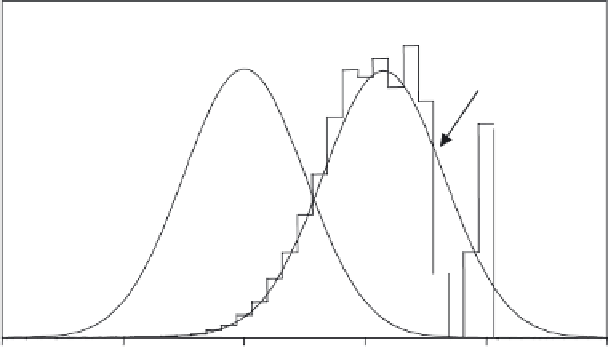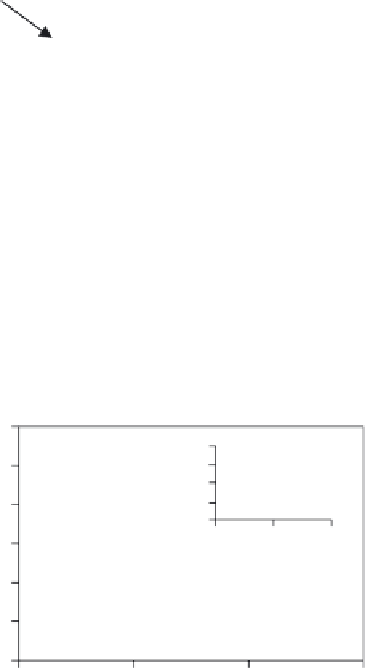Chemistry Reference
In-Depth Information
presence of
template
absence of
template
-4
-2
0
2
4
6
log
K
Figure 7.4
Histograms representing the composition of a continuous DCL in the absence and
presence of a template and a typical simulated DCL containing 10 000 compounds (bars). Bars
are labelled with the number of compounds in the affinity class. Reprinted with permission
from Corbett, P.T.,
et al
.
Org. Lett
. 2004,
6
, 1825-1827. Copyright (2004) American Chemical
Society.
60%
4.0%
×
×
50%
3.0%
×
×
×
×
2.0%
×
×
×
×
40%
1.0%
0.0%
×
×
×
10
000
100
000 1
000
000
30%
20%
×
×
×
×
×
×
×
×
×
× ×
×
×
×
×
10%
0%
1
100
10
000
1
000
000
Number of compounds in simulated DCL
Figure 7.5
Yields of the best binders as a function of library size. Each data point represents
the average from 100 simulated DCLs. Reprinted with permission from Corbett, P.T.,
et al
.
Org. Lett
. 2004,
6
, 1825-1827. Copyright (2004) American Chemical Society.
the target biomolecule, aqueous buffer, fragment building blocks and noncovalent target-
ligand complexes. A major difference is that
in situ
Click chemistry, unlike
in situ
DCC,
has minimal background reaction in the bulk solution.
In situ
Click chemistry additionally
presents a far tougher screening challenge owing to the very low level of conversion of
fragments to potential binding ligands. At present there is no material in the primary liter-
ature that describes the theoretical level of product conversion to expect; it has, however,


